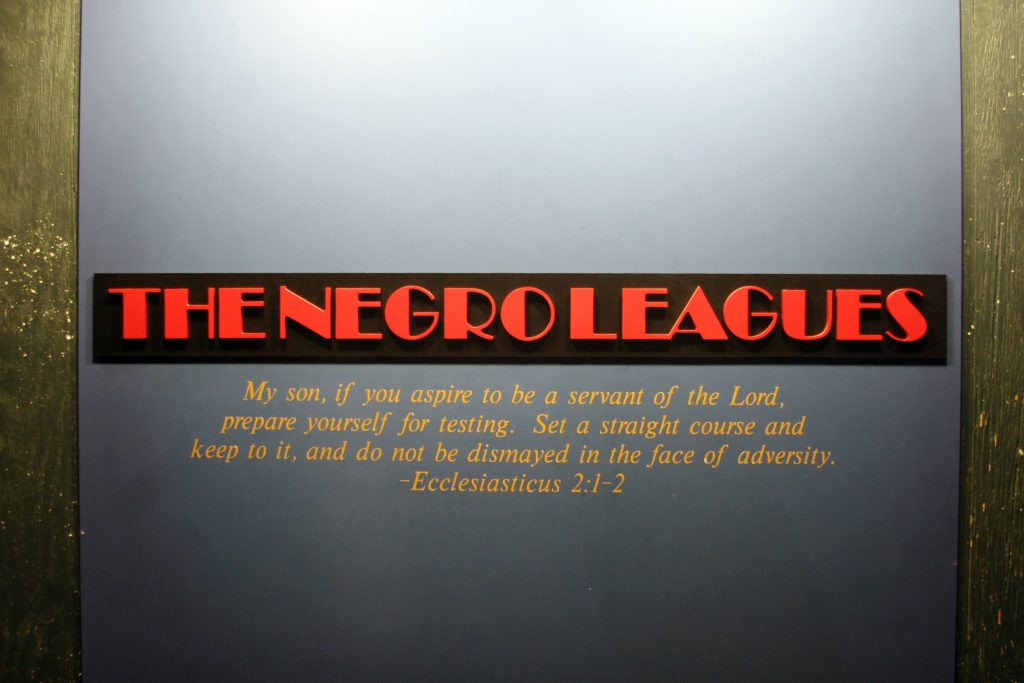
February is Black History Month in the United States – it is a time to recognize, celebrate and honor the contributions, culture and struggles of black people in our country. Kansas City, like so many places in the country, was deeply and profoundly shaped by its own black history. The city would be unrecognizable without it.
Kansas City’s jazz, baseball, culinary and general culture was shaped by and generated from black history.
Kansas City is an iconic jazz city and jazz is a historically black music that was spread to the wider, whiter culture to become the cultural touchstone it is today, in part by musical geniuses like Count Basie, Jay “Hootie” McShann, Joe Turner, Mary Lou Williams, Benny Moten, Hot “Lips” Page and many more – often from Kansas City. To explore more about the history of jazz and the contributions of black artists, you can go to the American Jazz Museum on 18th and Vine.

Black history is also inextricably tied to baseball history in the U.S. and in Kansas City specifically. The formation meeting for the Negro Leagues took place in Kansas City. The Kansas City Monarchs were one of the original Negro League teams – they won the first Negro League World Championship and won more championships than any other team in Kansas City history.

The Monarchs storied history included such players as Buck O’Neil, Satchel Paige – widely regarded as one of the best and most exciting pitchers to watch in either the Negro or Major Leagues – and Jackie Robinson – the first African American player to play in the major leagues and the only player in MLB history whose number is retired by every team.

To learn more about the Monarchs and the Negro Leagues, you can visit the Negro Leagues Baseball Museum. The museum describes the story of the Negro Leagues from formation to its eventual downfall after the integration of the MLB in addition to providing a timeline of black history in the U.S. starting in the mid-1800s.

This museum provides unique insight into how cultural awarenesses shaped sports and vice-versa and highlights incredible people involved in this microcosmic representation of the fight for equal rights for black people in America. This museum is well worth your time and the cost of admission – it is a chronicle of an American story that is also a Kansas City story and a human story through the medium of the national pastime.
Another Kansas City staple shaped by black history is barbeque. Kansas City barbeque is amazing, this is obvious. What is less obvious is that the reputation and culture of barbeque developed significantly in the 18th and Vine district – a historical and current hotspot of black culture. Without black history in Kansas City, Kansas City barbeque wouldn’t be what it is. The city would lack staples like Arthur Bryant’s, Gates Bar-B-Q and more.
These ways that Kansas Citians define the city and its culture were impacted and developed by black history. One cannot consider Kansas City and its history without recognizing and celebrating its black history and culture. What I’ve been able to briefly describe here is only scratching at the surface of all that black history has done for Kansas City, let alone the country as a whole.
Yet one can not only celebrate black history by admiring accomplishments and contributions of black people to the city. You must also look at the ways black people were systematically taken advantage of in the past and how such discrimination threatens the city today.
The most iconic, but certainly not the only, representation of the impacts of this history is the Troost divide – which the Monitor has previously covered in various ways. Troost Ave. is a boundary for stark racial, socioeconomic, educational and healthcare divisions.
A 2017 study by TIME magazine ranked Kansas City as the fifth most economically segregated city in the nation, with the most obvious evidence of this segregation being along Troost. Other representations of Kansas City divisions are apparent in rapid gentrification in areas like the Crossroads.
Such entrenched issues and systematic cases of racism deserve significantly more time and information than this article can provide. I encourage you to learn more about these issues and others – including the Kansas City housing crisis, healthcare access discrepancies and discrepancies in educational access, all of which disproportionately impact black citizens.
Black History Month is a time to reflect on black history and reckon with how black history can be squared with the black and the white present. This includes looking at the impact of slavery, discrimination, the civil rights movement
Jazz and Troost. Monarchs/baseball and the discrimination that forced the formation of the Negro Leagues. Barbeque and gentrification. All of it needs to be recognized. Especially during Black History Month.
Photos courtesy of Cassie Hayes.
